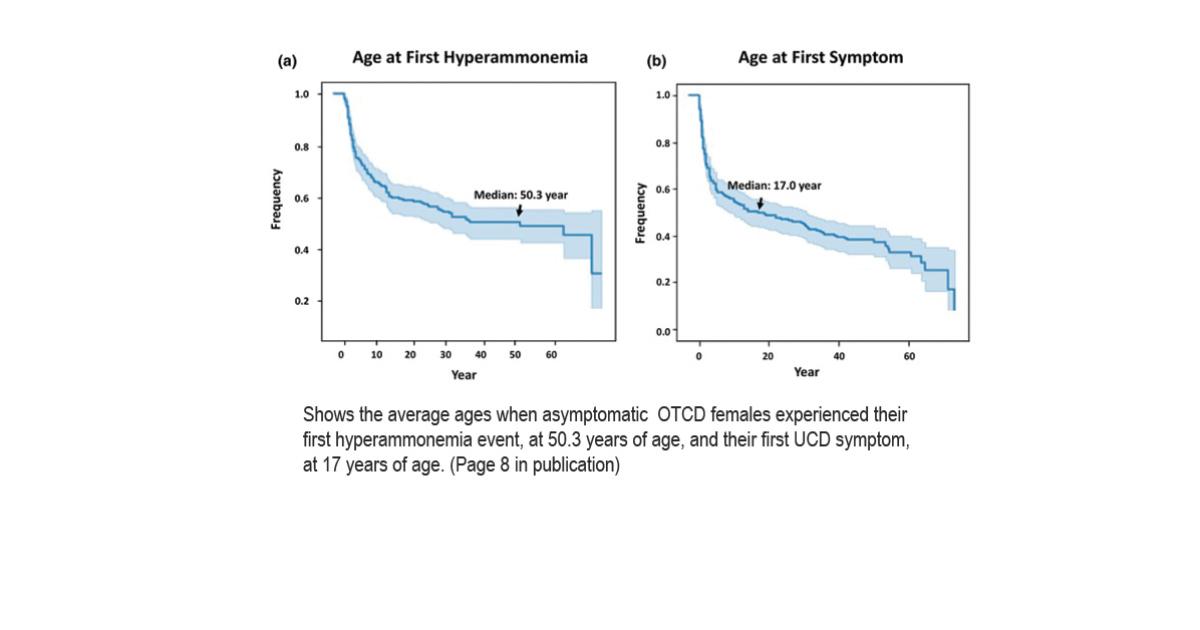Sen K, Izem R, Long Y, Jiang J, Konczal LL, McCarter RJ; Members of the Urea Cycle Disorders Consortium (UCDC); Gropman AL, Bedoyan JK. Are asymptomatic carriers of OTC deficiency always asymptomatic? A multicentric retrospective study of risk using the UCDC longitudinal study database. Mol Genet Genomic Med. 2024 Apr;12(4):e2443. doi: 10.1002/mgg3.2443. PMID: 38634223; PMCID: PMC11024633.
Females with Ornithine Transcarbamylase Deficiency (OTCD) may face health risks, even if they do not show severe symptoms. Researchers wanted to create a tool to predict which females are at higher risk for complications, thus helping doctors to provide better care and prevent problems in the future.
Key Takeaways:
- Because long-term health risks of females with OTCD with and without severe symptoms are unknown, researchers undertook an analysis of their health experiences.
- Some females with OTCD can face severe symptoms such as brain swelling as children that may go undetected.
- Females with OTCD may experience problems with anxiety, depression, trouble sleeping, and difficulty focusing more often than the general population.
- Less than 5% of females with OTCD who are categorized as asymptomatic may go on to develop hyperammonemia.
- Researchers want to develop a tool to predict which females with OTCD are at higher risk for serious health problems.
Ornithine transcarbamylase deficiency (OTCD), the most common urea cycle disorder, is what is genetically called, an X-linked disease, meaning, it is caused by a defect of a gene (OTC) that is located on the X-chromosome. Since males only have one X chromosome, they are more likely to have severe symptoms, while females usually have milder or no symptoms. However, even though 80% of females with OTCD are thought to be asymptomatic (i.e., not known to have serious symptoms), not much is known about their long-term health risks. This study looked at factors that could predict complications in these women by reviewing data from 302 females in the Urea Cycle Disorders Consortium (UCDC) and performing brain scans on one patient.
- Varying Symptom Severity: Females with OTCD can experience a range of symptoms. Some have severe issues like brain swelling as children, while others only face mild symptoms later in life. Many also deal with problems like anxiety, depression, trouble sleeping, and difficulty focusing, often more frequently than in the general population.
- Cognitive Impairment: Females with OTCD (even those without severe symptoms) can show signs of mild cognitive impairment. Brain scans have revealed changes in areas of the brain related to thinking and behavior, which could explain struggles with tasks like concentrating, decision-making, and emotional control.
The study's goal was to create a tool to predict which females with OTCD are at higher risk for serious health problems. This risk calculator could help doctors better manage OTCD by combining brain scans, cognitive tests, and quality of life surveys, ultimately improving long-term care and preventing complications in females with OTCD, even if they are not showing symptoms.


